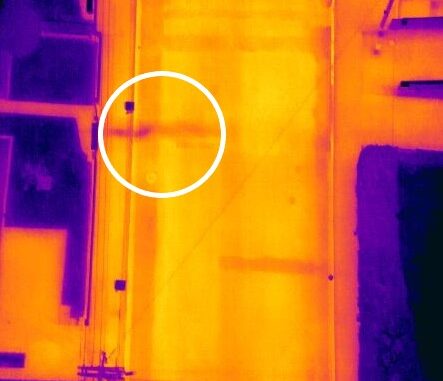
On the hunt for slow water leaks
Kāpiti Coast District Council is about to shine a light on its underground waterpipe network in Ōtaki – a thermal imaging light that detects leaks, that is.
Undetected slow leaks can waste huge volumes of water and cause extensive damage that is both costly and disruptive to repair once identified. In 2019/20, Council estimated water loss in the Ōtaki network could be as high as 293,000 m3 a year, a loss of 233 litres per person per day.
“Traditionally we’ve ‘listened’ for leaks using specialist equipment which can work well if the leaking water makes noise and the network contains copper or steel pipes which carry sound,” says Group Manager Infrastructure Services Sean Mallon.
“These methods don’t work when monitoring Polybutylene pipes, which we call the silent leakers, like those used in the Ōtaki network.”
Council has brought on specialist contractor Cardno to undertake thermal imaging of its pipes, a quick, non-invasive and effective way of scanning for leaks.
“At this time of year, soil is warmer than the water in our pipes and a leaking pipe will cool the surrounding area making it highly visible in a thermal image taken at night,” says Mr Mallon.
“The thermal camera is mounted to a drone which is flown down the corridor of a road and we can instantly see where we have leaks. This technology is a bit of a game changer for us as we can see how extensive a problem is without digging up roads and footpaths which can be hugely expensive and disruptive for our residents.”
The privacy of residents is a top priority for Council and the camera is set to a thermal range that only picks up differences in ground and water temperatures. When set to this thermal range and travelling at height, everything that’s not the pipe network appears as darkened objects in the images captured.
“The drone is piloted by a trained operator with over 30 years of experience, who is certified for night operations and complies with aviation safety protocols. The drone will not be surveying private property and the camera cannot see into houses or cars,” says Mr Mallon.
“Given how effective this technology is and our ability to carefully manage privacy concerns in urban environments, I think we’ll start to see this utilised more and more around New Zealand.”
This work will be undertaken from early April, weather dependant. For more information, see www.kapiticoast.govt.nz/water-leak-detection













































